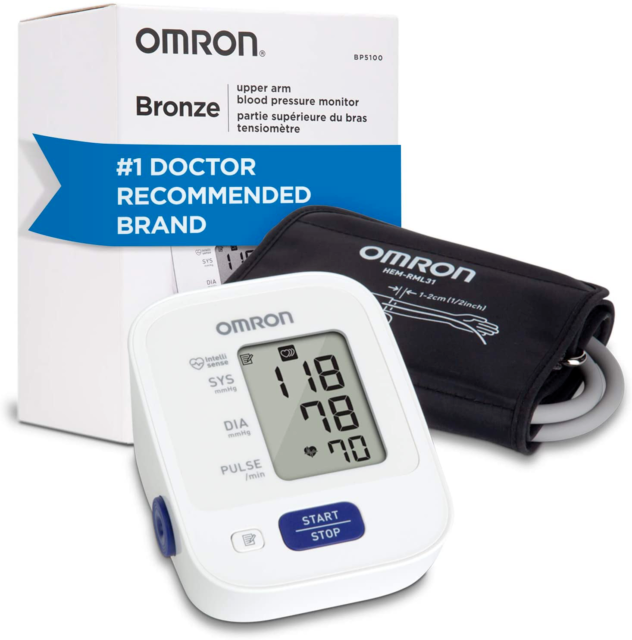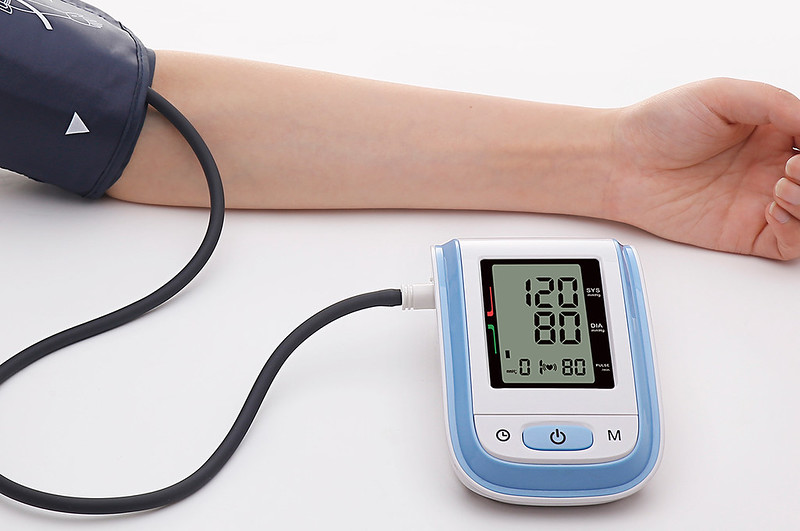Photo credit: boxymtech on VisualHunt
This post contains affiliate links.
Just slap the cuff on and pump it up, right? If that’s what’s happening at your doctor’s office or at home when your blood pressure is being taken, you may not be getting an accurate reading. In fact, the most common errors made while measuring blood pressure actually make the blood pressure appear higher than it really is.
The American Heart Association (AHA) has some very clear guidelines on this, and it matters a great deal when trying to decide a diagnosis of hypertension (high blood pressure), or when monitoring your blood pressure on medications. Below you’ll find the recommended way to take your blood pressure so you can get readings that are as accurate as possible. (Normal blood pressure is less than 120/80.)
30 Minutes Beforehand
The AHA recommends that you wait at least 30 minutes after drinking caffeinated beverages or exercising (or smoking—but hopefully you’re not doing that anyway!) before attempting to take your blood pressure. All of those activities can raise blood pressure, so you want to give your blood pressure time to come down to its baseline level before checking it.
You will also want to be sure your bladder is empty before taking your blood pressure, as a full bladder can raise blood pressure.
Sit Properly
Sit with both feet planted on the floor—don’t cross your legs—and be sure your back is supported so you are sitting upright. It helps if you can also support your arm at the elbow, so your arm lies at the same level as your heart. So rest your elbow on a table or on the arm of your chair. Attempting to hold your arm upright on your own by flexing your arm muscles is a form of exercise, and that in itself will raise your blood pressure.
Remain in this relaxed sitting position for 5 minutes before taking your blood pressure. Sit quietly, without talking or checking your cellphone—both of those activities also raise blood pressure.
Cuff Size Is Important
Be sure to put the blood pressure cuff on your bare arm, directly above the bend of your elbow. Don’t attempt to squeeze the cuff on over clothes; either roll up your sleeve or pull your bare arm out of your sleeve for the blood pressure measurement.
Use a cuff that fits your arm; it should be snug, but not too tight. If the cuff is too small for the size of your arm, it can artificially elevate your blood pressure measurement.
So you can now see why running into your doctor’s office and immediately having your blood pressure taken—after fighting traffic, trying to find a parking spot, trying to find the right office building, rushing in to your appointment without time to use the bathroom, talking with the person taking your blood pressure—can result in falsely elevated readings. If your blood pressure is elevated on the first reading, you can always ask for it to be rechecked after you’ve had a chance to sit quietly for 5 minutes. You can also ask for it to be taken in the other arm. If you have any questions about the accuracy of your blood pressure reading, don’t be afraid to talk to your doctor.
You can also ask your doctor whether any over-the-counter medications you may be taking—like certain decongestants (especially those containing phenylephrine), or nonsteroidal anti-inflammatory drugs (NSAIDs) used to relieve pain, like ibuprofen—could be contributing to elevated blood pressure.
If you are checking your blood pressure at home, ask your doctor how often you should check it and at what times of day. It can be very helpful to your doctor for you to keep a written or digital log of your home blood pressure readings and share them at your next visit. This is the home blood pressure monitor that I use myself:

For more information, visit the American Heart Association’s site, which has a number of wonderful resources on blood pressure measurement, management, and treatment options: https://www.heart.org/en/news/2020/05/22/how-to-accurately-measure-blood-pressure-at-home
Want to learn more about how to keep your heart healthy? Sign up for my newsletter.
You may also be interested in reading:

